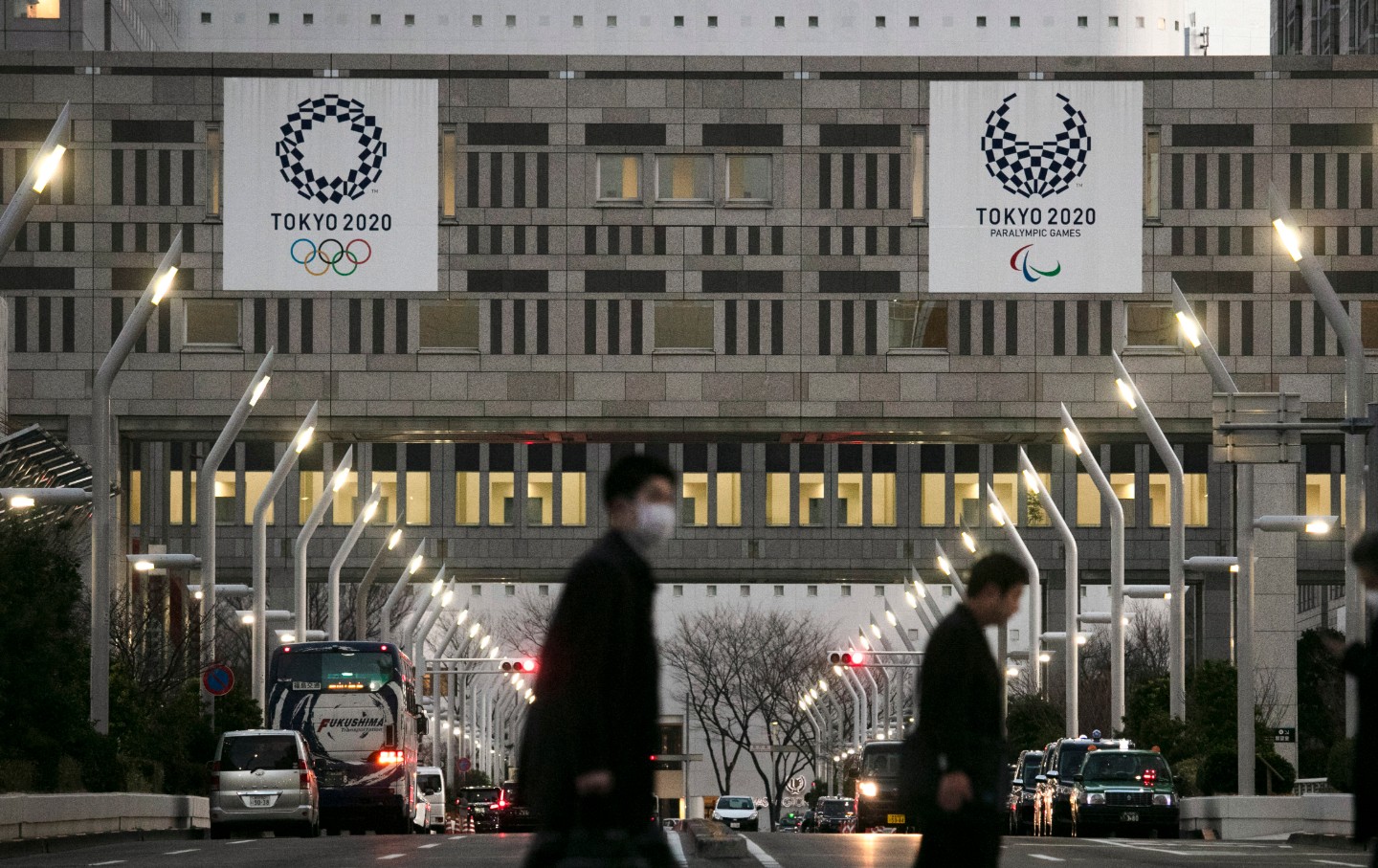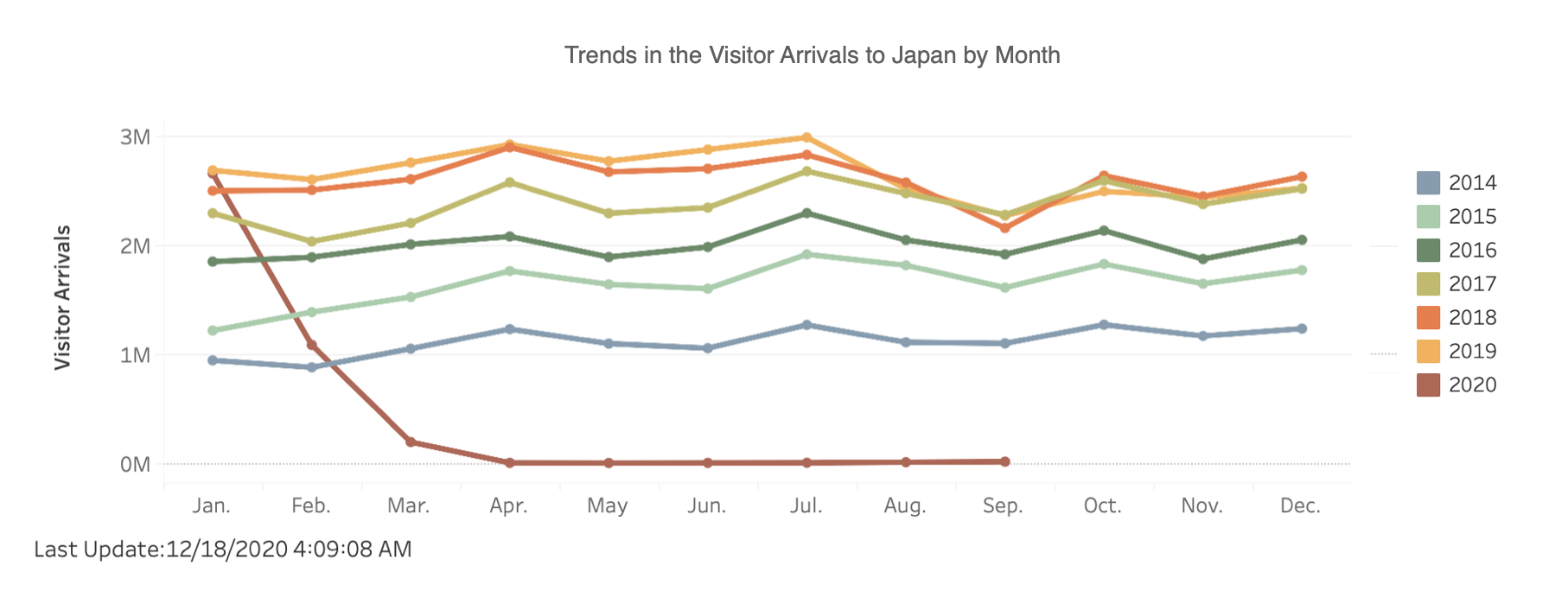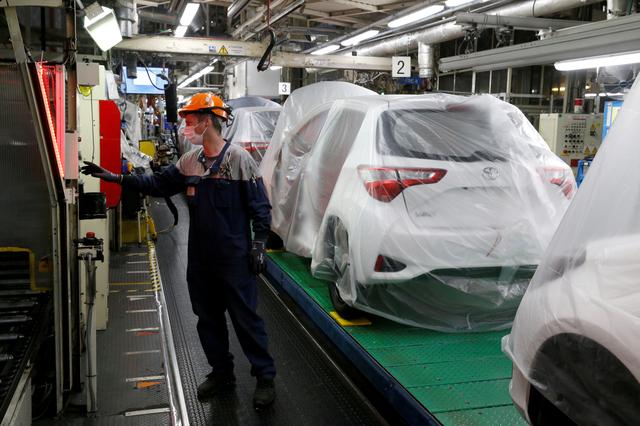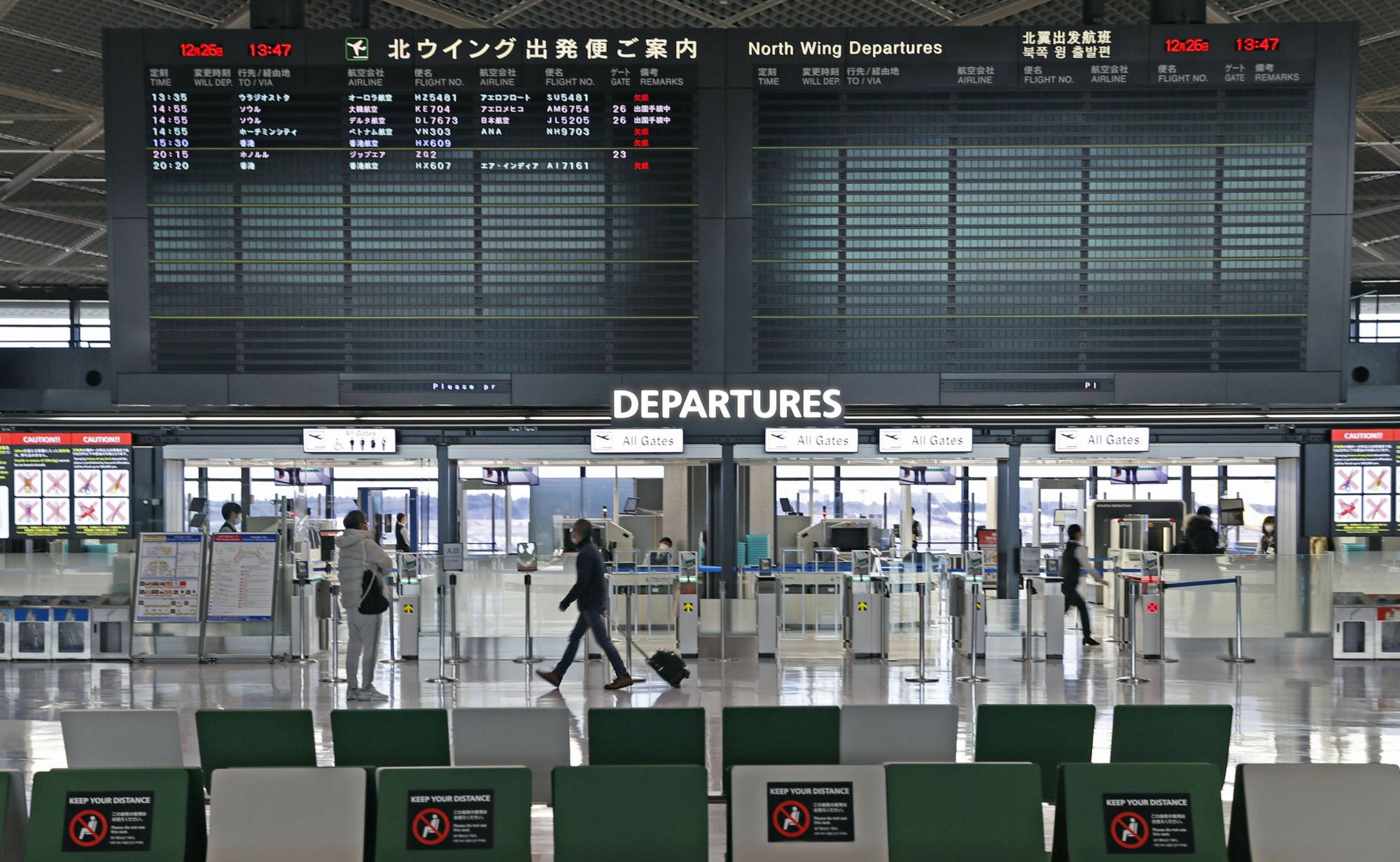The year 2020 has been tough on the global economy due to the pandemic and the worldwide recession, starting around mid-March. Japan was no exception. Its economy recorded a massive decline during the initial stages of the pandemic.
During this period, Japan faced major challenges, not least of which are due to its postponement of the 2020 Tokyo Olympics, which could have been a major economic boost.
Back in March, Goldman Sachs estimated that the cost and economic losses of delaying of the Olympics could come around $4.5bn (550bn yen) in inbound and domestic consumption.
The emergence of COVID-19 prompted calls for Japan and the International Olympic Committee to postpone the 2020 Summer Olympics. Source: The Nation
Another severe blow to its economy was the sales tax hike, which was imposed on consumers in October 2019. The higher tax caused consumers to spend less, despite the government introducing rebates on certain purchases.
Tourism, a large part of the national economy, was likewise hit hard as foreign visitors were barred from entering the country to stem the spread of the virus.
Tourism in Japan has hit an all-time low due to COVID 19. Source: Japan National Tourism Organization
Japan’s economic slump lasted for about three quarters of the year. The BBC reported that this was the country’s worst economic decline on record, with “gross domestic product falling by as much as 7.8% in April-June from the previous quarter, or 27.8% on an annualised basis.” It also did not help that even before the crisis, Japan was struggling with low economic growth.
The Japanese automotive market, in particular, saw a significant decrease.
Tokyoesque reports: “Like most industries, the Japanese automotive market has been affected by COVID-19. All Japanese automakers had to close production plants around the world for safety measures.”
This led to a sales decline by as much as 23% in June in brands like Toyota, Honda, and Nissan.
Toyota Motor Manufacturing plant in France shut down for five weeks to follow lockdown guidelines due to coronavirus disease (COVID-19) outbreak. Source: Reuters
Japanese automakers, however, were committed to protecting jobs amid the crisis.
Toyota Chief Executive Akio Toyoda, head of the Japan Automobile Manufacturers Association, set up a special fund for workers who had been laid off, according to Economic Times.
Toyota even began manufacturing face masks to augment the demands of the market.
Economists and analysts, however, saw a sharp economic rebound in Q3, allowing the market to recover at least half the growth it lost during the three consecutive quarters.
This is attributed to several factors, a major one being Japan’s success in keeping relatively low infection rates.
Improved trade with the United States, China, and other parts of Asia, also contributed to export growth.
Meanwhile, Japan’s household spending also bounced back in October 2020, in what is said to be the biggest increase in household spending since 2000.
Overall, the economy’s growth spurt is the biggest on record since 1968.
Signs of recovery
Analysts suggest that these are signs of recovery for the economy.
For the next fiscal year, the Japanese government is optimistic for even an even greater lift.
Just this month, policymakers introduced fiscal stimulus measures aimed at speeding up and supporting the recovery.
The Straits Times reports: “The economy is expected to grow 4 per cent in price-adjusted real terms in the next fiscal year starting April 2021, the latest estimate by the Cabinet Office showed on Friday (Dec 18). The new estimate compared with its previous forecast of 3.4 per cent growth projected in July.”
Prime Minister Yoshihide Suga said the stimulus package is worth 73.6 trillion yen (US$708 billion), and will include 40 trillion yen worth of fresh spending.
If all goes according to plan, the Japanese economy will rebound to pre-COVID-19 levels by the first quarter of 2022.
The approved fiscal stimulus package includes measures to accelerate the digitalization efforts of the Japanese society to ensure economic growth after the coronavirus crisis is contained. Image source: S-GE
Headwinds and challenges
Policymakers, however, are bracing for more headwinds, risks, and challenges to the still-fragile economy.
Global economist Michael Wolf, writing for Deloitte Touche Tohmatsu Ltd., notes that COVID-19 infection rates are again on the rise, and in fact hit a record high in the past few days.
Prefectures are exhausting its reserved medical resources, and even raising restrictions on economic activity to curb the number of new cases.
On December 26, the Japanese government imposed a ban on new entries of all non-Japanese nationals from around the world effective until end of January. Source: Japan Times
These are seen to severely impact consumer spending, and affect the already weak domestic demand.
Companies, meanwhile, are also likely to still be cautious with spending, with continued disruptions on the supply chain, and an overall low demand for sales and services.
On December 21, the cabinet approved the initial budget for 2021 which will be around ¥106.61 trillion ($1.03 trillion).
This figure includes the ¥5 trillion in reserve funds for future responses to the pandemic, government sources said.
Assuming that the aggressive government support continues, and infection rates are kept down, Japan should see a relatively robust recovery for its economic outlook, if not in 2021, in the next few years.
It is likely that the upgrades in technology to accommodate the new processes and consumer preferences during the pandemic, as well as strong export demand from China, Southeast Asia, Europe and the United States, will further boost its recovery.
Of course, even these countries are facing immense economic challenges due to the pandemic. According to the CoronaTracker website, infection rates in the United States and Europe, of late, are seeing a resurgence, and might trigger a lower demand for Japanese export goods.
On the other hand, China’s decision to stockpile goods such as semiconductors and machinery amid tensions with the United States, could also impact Japan.
Right direction
If so, Japan may be able to achieve the economic recovery, or perhaps even the growth, it so eagerly hopes for.
However, if virus outbreaks are contained, monetary and fiscal policies remain sound and responsive, and the vaccine becomes widely available in the near future, confidence in the global market may soon be restored, and the massive losses reversed to pre-pandemic levels.
This totaled to an estimate of about US$9 trillion in losses worldwide—the worst economic downtown in history since the Great Depression, per the IMF.
The world continues to grapple with the global recession, experiencing as much as a 4.2% drop this year, according to estimates by the Organization for Economic Co-operation and Development (OECD).
Japan still remains vulnerable to the continuing risks of the coronavirus pandemic and its many economic effects.
But as with the economies of other parts of the globe, its future is strung out in a precarious balance.
In conclusion, Japan’s economy seems to be heading in the right direction.
Main image by: Alex Knight on Unsplash
















